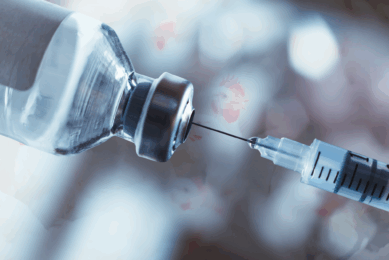Post-antibiotic era: Managing antibiotic resistance in livestock

The growing world population has increased the demand for meat, egg, and milk products and has led to a rapid growth in the scale of livestock enterprises globally. Therefore, livestock production intensification would likely increase the animal density and the need to administer antimicrobial substances.
According to the World Health Organization more than 70% of medically important antibiotics are sold to food producing farms which contributes to the increased prevalence of antibiotic-resistant bacteria. In addition, antibiotic-resistant genes are transmitted from animals to human through foodborne route or contaminated surfaces and to the environment through improper disposal of animal manure into bodies of water, or as an input in the soil for plants. Therefore, it is essential to have an action plan to better control and contain antibiotic resistance.
On-farm administration of antibiotics
Antibiotics sales and distribution figures don’t necessarily reflect how antibiotics are used on farms. Antibiotics are commonly used in livestock farms for therapeutic, metaphylaxis, prophylactic, and growth promotion use. The Food and Drug Administration approves therapeutic, metaphylaxis, prophylactic applications in food animals. However, more than 90% of antibiotics can promote weight gain and the use for growth promotion is the most controversial. Research has shown that, in 2019, more than 6.1 million kilogrammes of antibiotics were sold to US farmers, out of which approximately:
41% were used in cattle industry,
42% in swine industry,
17% in poultry industry.
Tetracyclines is the most frequently sold class of antibiotics for livestock use accounting for 67% of all sales, penicillin accounts for 12%, and macrolides accounts for 8%.
Recommendations to manage antibiotic resistance in livestock
Antibiotic resistance in livestock is a complicated issue which requires efforts from the government, restaurant chains, stakeholders, agencies, agricultural businesses, and consumers. Antibiotic use regulations implemented by the government restrict the use of medically crucial antibiotics to livestock and decrease the proliferation of antibiotic resistant genes.
Economic strategies
In addition, implementing antibiotic taxation policies and providing monetary subsidies for agribusiness companies that follow specific standards in terms of antibiotic use are helpful strategies to mitigate on-farm antibiotic administration.
Transparency
Furthermore, increasing transparency for customers regarding the source of the meat (naturally raised or the growth-promoting antibiotics are used) is essential for making purchasing decisions. Usually, more health-conscious customers prefer to consume antibiotic-free products if they are given the option, which in turn can gradually shift the food demand towards antibiotic-free meats.
Biosecurity & infrastructure
Moreover, livestock industry and agribusiness companies are required to promote biosecurity and to improve their infrastructure to prevent and control the introduction and spread of infection, which in turn reduces the amount of antibiotics needed.
Management
In addition, vaccination, proper sanitation, well-maintained ventilation systems, and selecting more robust breeds will improve the health status of livestock; thus, reducing on-farm antibiotic administration for prophylaxis and metaphylaxis purposes.
Sustainable livestock production in post-antibiotic era
Sustainable livestock production systems strike a balance between meeting the growing demand for animal products and reducing the negative side effects from the livestock sector to the minimum. The Food and Agriculture Organization of the United Nations reported that the international food system of the second half of the 21st century is more sustainable than the food system of the late 20th or early 21st centuries. Any attempts to mitigate antibiotic resistance and to decrease unnecessary antibiotic use in food animal production contributes toward sustainable livestock production development.
Concluding remarks
Antibiotic-resistant bacteria proliferated in livestock could be widely disseminated in fresh meat products and the commensal bacteria found in fresh meat products may serve as reservoirs for resistant genes that could potentially be transferred to pathogenic organisms in humans. As a result, it is required to move livestock industry away from the prolific use of antibiotics for growth promotion and disease prevention using alternative approaches. Although it is important to consider that the need for antibiotic use in food animals is unlikely to be obviated totally. Since antibiotic resistance in livestock is a multifaceted issue, efforts from the government, restaurant chains, stakeholders, agencies, agricultural businesses, and consumers are required to mitigate antibiotic overuse and to manage antibiotic resistance while maintaining high standards of animal health, welfare, production, and food quality.











